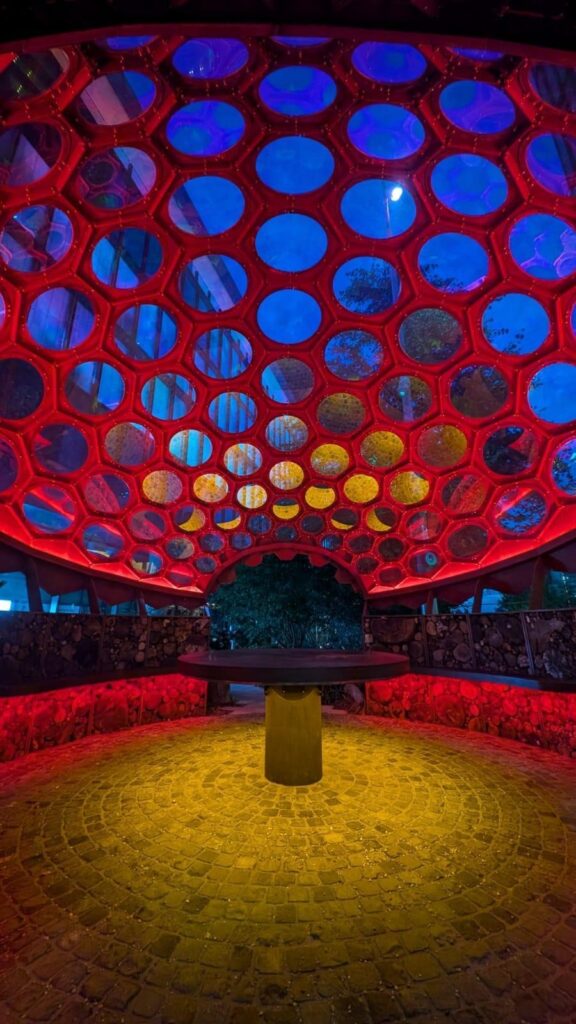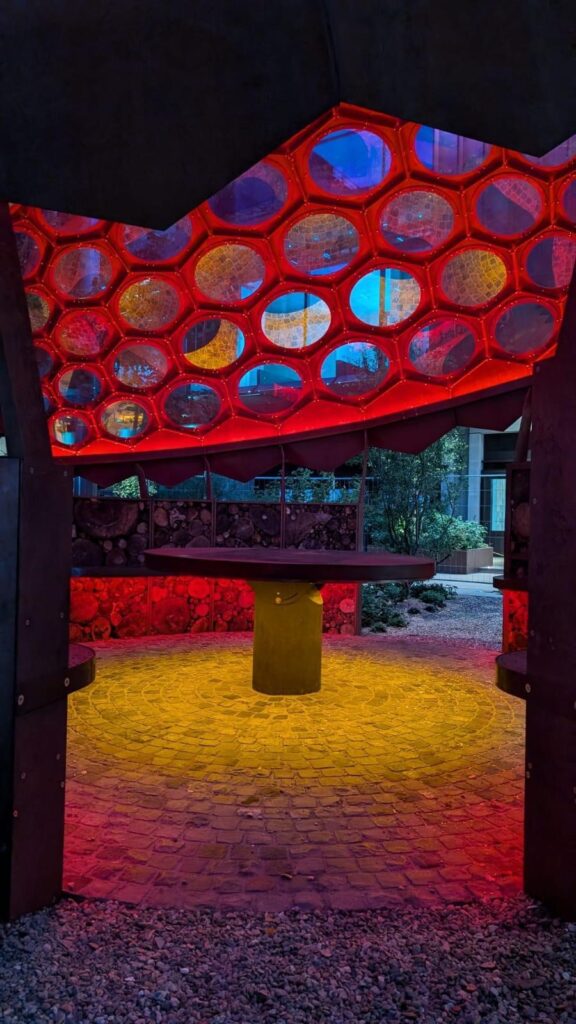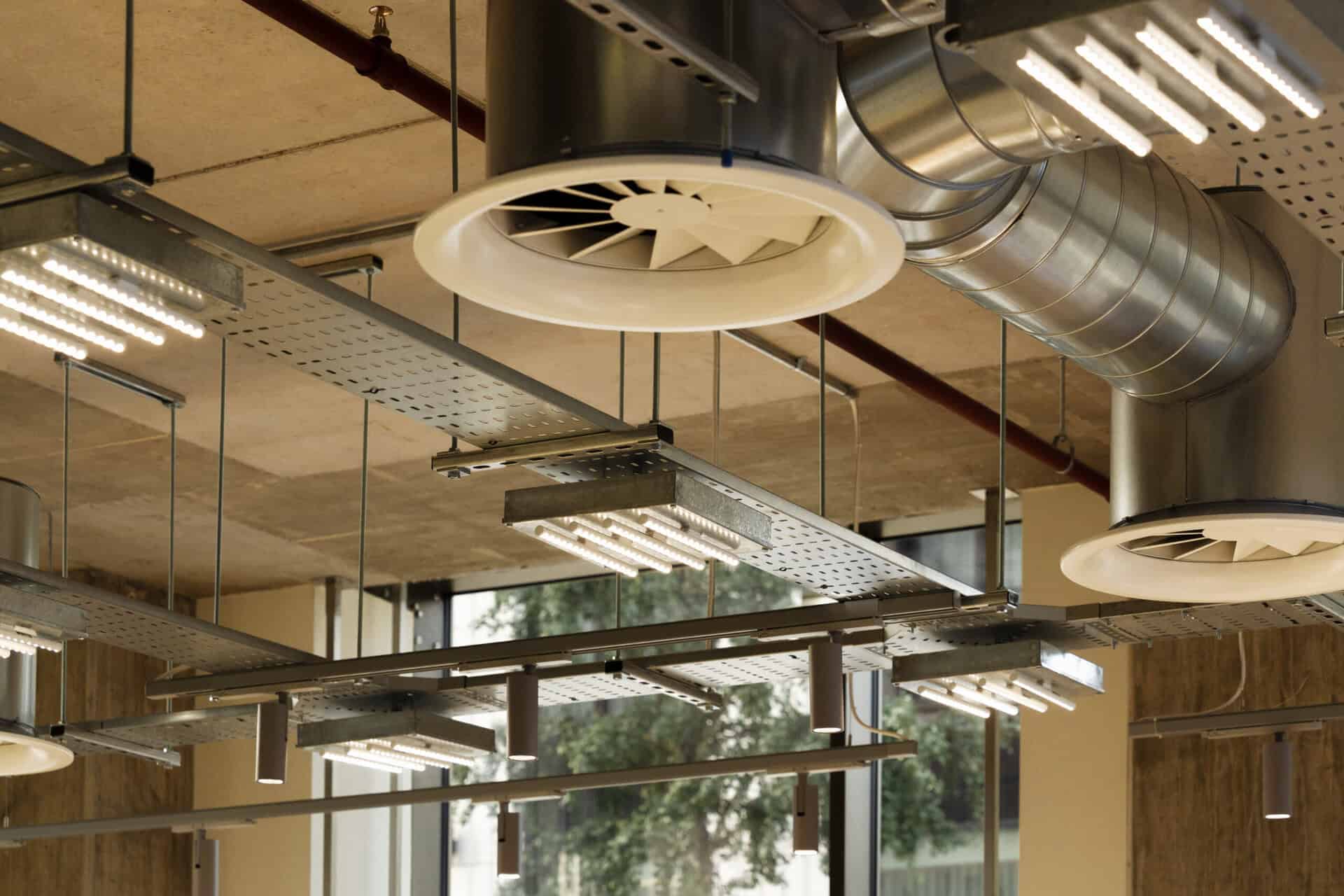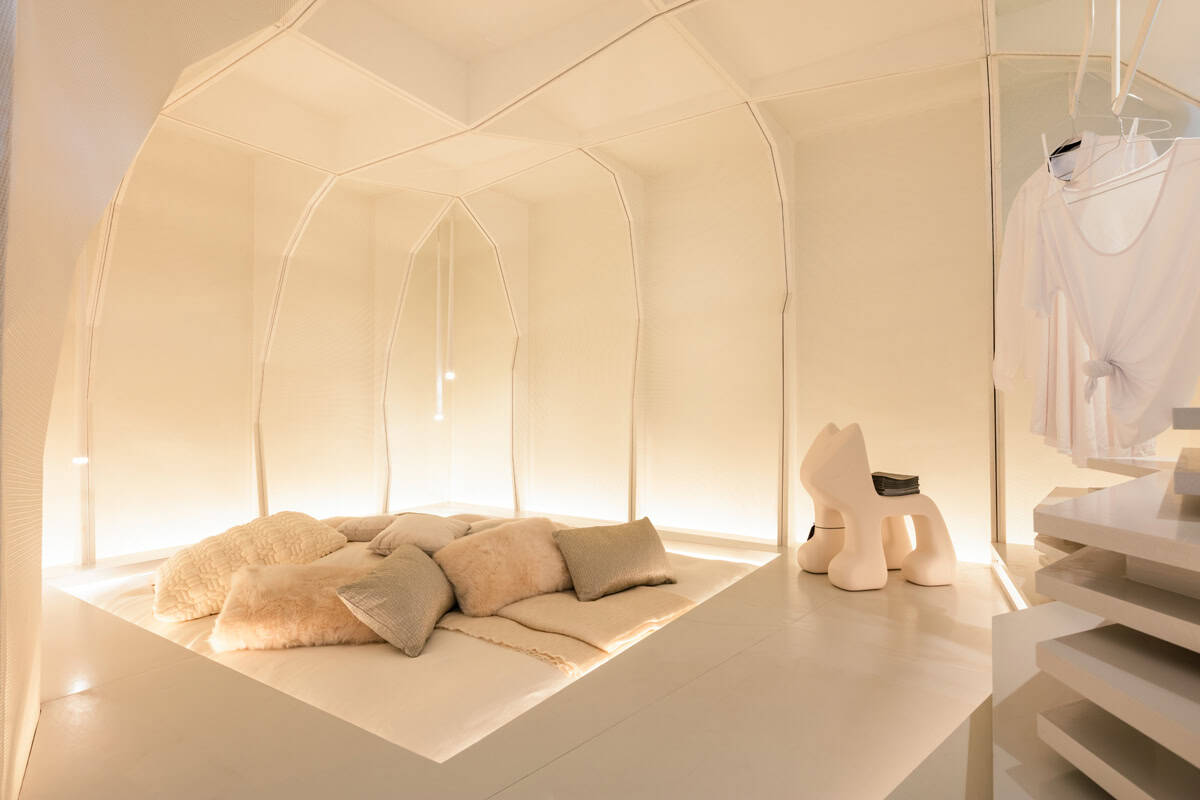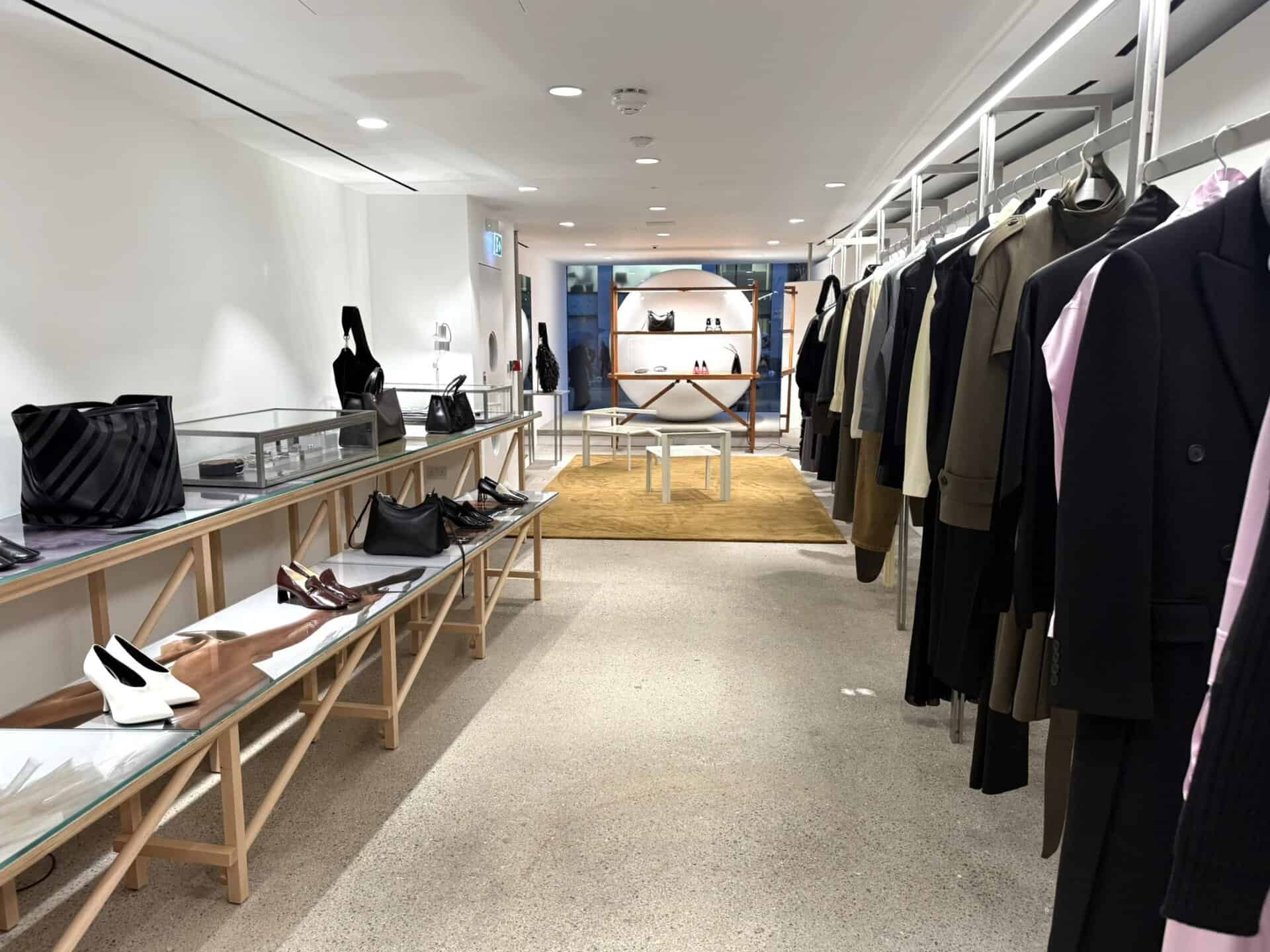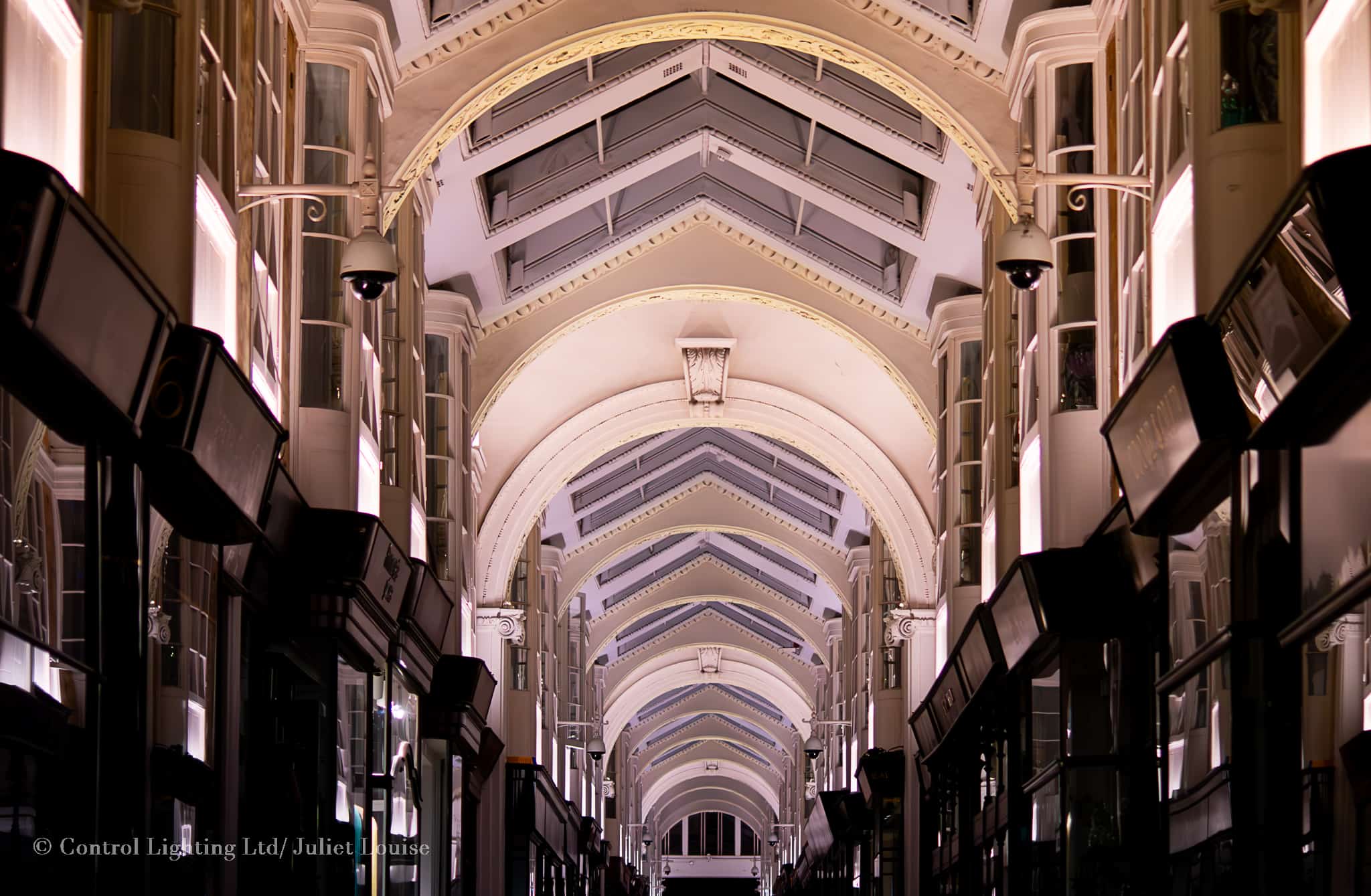Architectural FX recently supplied fixtures and supported the IQL Stratford garden lighting project. The lighting of this delightful project was designed by Alexia Gkika and Yasmeen Al-wakeel of Buro Happold lighting.
Although it is a relatively small lighting project there is an immense amount of pride and passion in delivering the scheme. This award winning pavilion was originally designed by Tom Massey over a year ago and was displayed at the Chelsea Flower Show 2023. It has now found its new permanent home at Stratford Cross (ex IQL).
The lighting narrative is based on the visual systems of insects. Scientific studies indicate that insects’ peak vision occurs in the ultraviolet spectrum (UV-A), around 365 nanometres. Acting on this scientific data, Buro Happold Lighting used long-wavelength lighting in red and deep amber tones. These are colours that insects’ visual systems do not perceive or are less sensitive to. This sensitive ecologically aware design pays homage to our threatened insect population and provides a home and sanctuary to an array of species. The dome also serves as an outdoor classroom space where everyone can observe insects, learn about their critical role in maintaining a healthy ecosystem, raise awareness and inspire further action!
The lighting narrative is based on the visual systems of insects. Scientific studies indicate that insects’ peak vision occurs in the ultraviolet spectrum (UV-A), around 365 nanometres. Acting on this scientific data, Buro Happold Lighting used long-wavelength lighting in red and deep amber tones. These are colours that insects’ visual systems do not perceive or are less sensitive to. This sensitive ecologically aware design pays homage to our threatened insect population and provides a home and sanctuary to an array of species. The dome also serves as an outdoor classroom space where everyone can observe insects, learn about their critical role in maintaining a healthy ecosystem, raise awareness and inspire further action!
James Hamilton of Architectural FX worked closely with the team to supply flexible IP68 rated Neon in red. These were located onto an existing cove ledge at the base of the dome. Flexible IP66 rated amber Piko was installed to light the central table of the dome. The design was scrutinized fully to ensure robustness and all suitable remote drivers and cabling were supplied to suit all lengths of diffused flexible neon. These accessories were concealed in an accessible enclosure within the hollow base of the roundel for future maintenance.
The convex roof of the pavilion was inspired by an insect’s compound eye, spanning 7m in diameter and built using corten steel and laser cut hexagonal panels of dichroic glass. All of the other elements of the lab, including the habitat panel walls, were fabricated to provide habitat and shelter for insects, inviting them in to facilitate study. During daytime, the dichroic-covered window cells produce vibrant displays of colour, magnifying the garden’s presence. After dusk, lighting offers a sensory experience, completely transforming the ambiance, creating a serene, meditative space that connects people to nature.
The paved paths on either side welcome visitors and blend the structure perfectly with the existing surroundings.
The scheme is a fine example of circularity in design. It benefits from reuse of the lighting columns lighting the surrounding public areas. With a simple change of pattern, the gobo projectors were repurposed to cast insect-inspired patterns onto the main entry points to the pavilion.
The design had to be retrofitted and well-integrated to ensure the scheme’s longevity and robustness. Additional pelmets and downstands were added on the perimeter counters and under the central table, securing the linear lighting in place.
This is a project for all involved to be proud of, and James Hamilton is especially proud of the acknowledgement from Alexia:
‘My gratitude to Architectural FX for their technical support, attentiveness and honesty. It’s rare to receive this level of care even when prospective orders are so negligible compared to kilometers of product in other jobs.’

